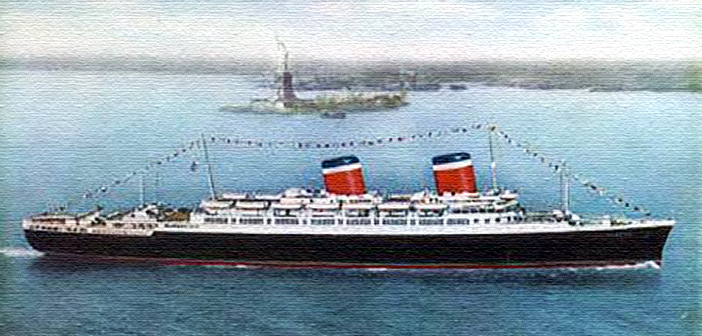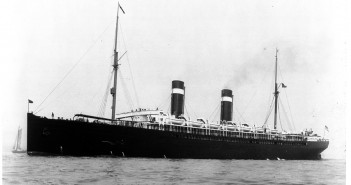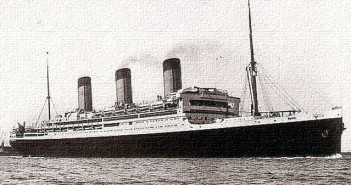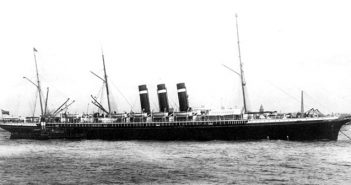America (1940) was officially laid down on 22 August 1938. She would be built at the Newport News Shipbuilding and Dry Dock Co. in Newport News, Virginia. Exactly two years later, on 22 August 1940, America completed her unusual maiden voyage.
Sailing into a world already engulfed in war, America’s maiden voyage was possibly the strangest of any 20th century ocean liner. With European waters a war zone, a traditional transatlantic maiden voyage was out of the question, despite the fact that the US was officially neutral at the time. A Caribbean cruise was seen by USL officials as a less risky alternative, despite the likely presence of U-boats throughout the voyage.
To prevent the possibility of America becoming the first ocean liner torpedoed on her maiden voyage, each side of her hull was painted with a pair of giant US flags with the words “America” and “United States Lines” boldly printed between them. The graphics were illuminated at night. Liners of several other neutral nations used a similar form of identification livery. America’s maiden voyage, such as it was, went off without a hitch.
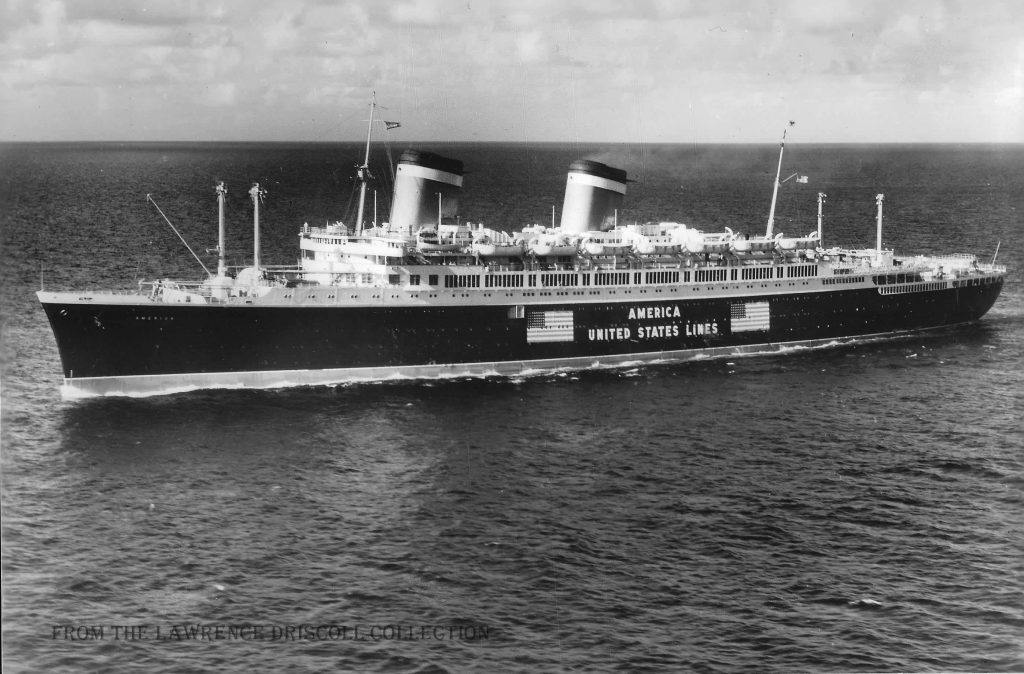
America was United States Lines’ flagship until the arrival of United States in 1952. The 26,454 GRT, 722-foot vessel accommodated 543 in cabin class, 418 in tourist class, 241 in third class and 643 crewmembers.
America was a smart, stylish liner. Designed by William Francis Gibbs (who would also design United States) America featured two raked funnels and a tall, slightly raked, forward prow. Her unique “san pan” funnels became a sort of United States Lines trademark that can still be seen today (and, hopefully, for many more years) on United States.
Americas’ funnels weren’t perfect, however. They smoke they spewed tended to linger in some aft deck areas. To solve the problem, USL quietly raised the funnels’ height by an extra 15 feet. Many observers actually liked the new, taller look. Apparently, size matters when it comes to funnels.
During World War II, America sailed as the troopship USS West Point. She would eventually carry over 350,000 troops, more than any other US Navy troopship in World War II. She would also transport diplomats, Red Cross workers, children, prisoners of war and U.S.O. entertainers.
After the war America finally began sailing the transatlantic route she was designed to serve—in tandem with United States beginning in 1952. After about a dozen years of steady, reliable crossings and cruises, America was withdrawn from service in mid-September 1964, a victim of airline competition. After passing through the hands of several owners, she was wrecked on a beach at Fuerteventura in the Canary Islands in 1994. Grisly, disturbing photos of her slow demise are all over the Web, should you care to search for them.
Did you like this article? When you buy anything through the link below, Amazon will contribute a small amount to Ocean Liners Magazine at no extra cost to you.
Shop Now

